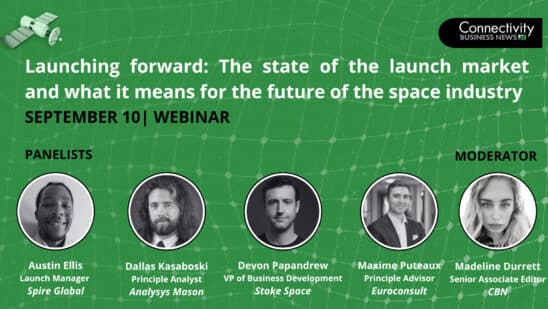Connectivity Business News has tracked more than 70 announced investment transactions in the space and connectivity sector in 2024 so far, exceeding $60 billion in value. Major acquisition announcements in 2024 include European satellite operator SES’ planned $3.1 billion acquisition of American satellite operator Intelsat and T-Mobile’s $4.4 billion purchase of UScellular. Stock activity for space and connectivity firms of all market capitalizations is at an all-time high, according to the Connectivity Business News stock indexes, which track daily stock performance. Panelists in this webinar will discuss the implications of investment activity in 2024 and forecast what’s in store for 2025.
This is a dynamic time for orbital launch as satellite capabilities see increased demand worldwide. There were 219 orbital launches in 2023 and Sept. 10, we’ve already seen more than 160 launches across nine countries in 2024. According to Connectivity Business News’ Satellite Launches Dashboard, which tracks monthly launch activity since 1957 by country, launch provider, launches over time and mission type, orbital launch has shifted toward commercial applications such as satellite communications in the past decade. Since approximately 2016, the U.S. and China have overtaken Russia and Europe in launch cadence. SpaceX, which in December 2015 for the first time launched a satellite into low Earth orbit using its Falcon 9 rocket, has made most of the U.S.-based launches since 2017.
The satellite industry is experiencing significant shifts due to evolving market dynamics and emerging technologies. As market demands evolve, satellite service providers face the challenge of navigating this transformative period. One key strategy emerging is the convergence of GEO, MEO, and LEO satellites to meet diverse user needs. End users prioritize seamless connectivity and expect service providers to handle the technical aspects of satellite orbits.
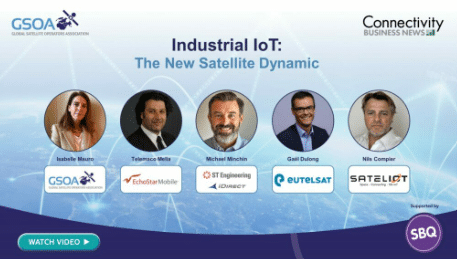
The phrase ‘Internet of Things’ is mostly associated with the connected devices in the home and smart city street sensors. However, in combination with 5G, many more opportunities are created for businesses to leverage the Internet of Things (IoT) – there is a whole new world of the Industrial Internet of Things (IIoT). IoT is connecting Things and People, IoT and satellite for the service of the greater good.
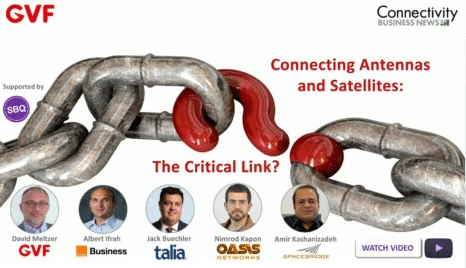
With satellite communications fulfilling unique business needs, this discussion was premised on the fact that this comes with significant network challenges. The webinar began with a quick high-level overview of exactly what comprises the various hardware technology and software service elements in the chain connecting antennas on the ground and satellites in orbit.
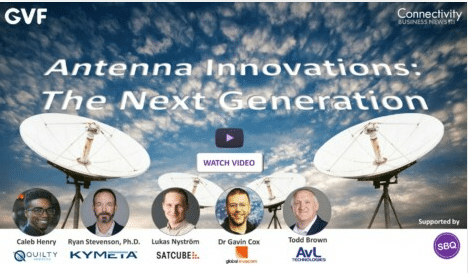
The expertise of Ryan Stevenson (Kymeta), Lukas Nyström (Satcube), Gavin Cox (Global Invacom), and Todd Brown (AvL Technologies) – bringing perspectives from across the parabolic antenna and flat panel antenna design and manufacturing segment – was ably guided in this webinar by Caleb Henry (Quilty Analytics), resulting in a very informative 60-minutes.
The discussion served to unravel some of the complexities of the highly dynamic satcoms sector ground segment, and more specifically on innovation in antenna technologies and evolution of antenna markets.
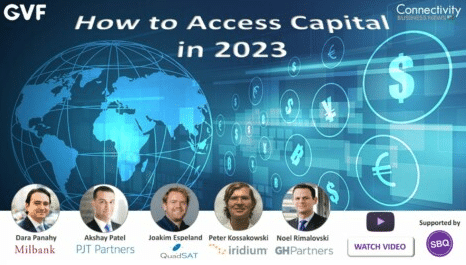
Panelists from investment institutions, an established LEO satellite operator, and a New Space start-up undertook a detailed examination of space sector investment. Moderated by a partner at an international law firm with decades of experience in the space industry, the webinar began with an introductory overview looking at macro trends in terms of availability of capital and investments in the space sector – especially in the context of high interest rates and declining stock prices.
Following the overview, panelists spoke to how today’s capital investors are increasingly focused on business fundamentals rather than just ideas and unproven technologies.

The dialogue began with a definition of a ‘LEO terminal’, including an exploration of the degree of integration of LEO terminal components and the more software-centric facets of their design. The conversation went on to explore SpaceX/Starlink as “the elephant in the room”, asking “How can the rest of the industry compete?”

Having five industry experts covering the satellite operator, service provider, and equipment OEM segments from the satellite mobility sector in the same (virtual) “room” was bound to be a great opportunity for an online audience to ask their penetrating questions on topics maritime and aeronautical. This proved to be the case, and the high level of audience engagement in today’s webinar theme resulted in many questions still remaining at the end of a very interesting 60 minutes. As well as the video recording of today’s dialogue being available here, so too are panelists’ written answers to those remaining questions.

The panel discussion focused on examining the many dimensions of space sustainability and the possibility that the world may soon pass the point where space sustainability is seriously threatened. Moderated by Victoria Samson of the Secure World Foundation, the moderator and panellists noted the significant increase in orbiting satellites and the increased risks associated with a doubling of satellites over the last 4 years to over seven thousand. Panellists Maurizio Vanotti of OneWeb, Frank Backes of Kratos, and Dr Mark Dickinson of Inmarsat noted additional factors that are increasing the risks to space sustainability such as the militarization of space, evolution of satellites in the form of larger arrays and increased mass, and increased manoeuvrability of satellites.
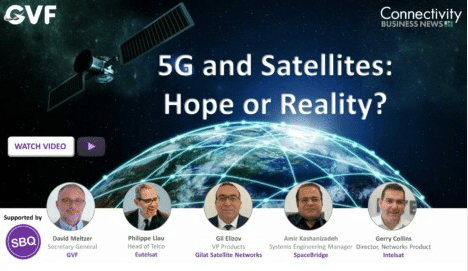
Beginning with the panelist’s views on the question, “The 5G Standard is essentially a definition of a networking architecture with multiple access technologies: Wi-Fi; small cells; traditional mobile wireless; and satellite. What are the characteristics of satellite that make it so essential to realizing the full potential of 5G?” the discussion went on to explore the detailed significance of 3GPP Release 17 for the satellite industry beyond the immediate “buzz phrase” of the ‘Network of Networks’, and to provide a preliminary advance perspective on the likely medium to long term implications of the following Releases 18 and 19, including projections on the probable revenue opportunities which satellite will be positioned to leverage.
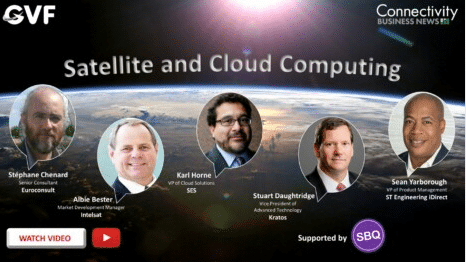
The wide-ranging cloud computing-related discussion encompassed multiple inter-connected topics such as:
• the convergence of ground stations and data centers
• distributed architectures
• the ‘network of networks’
• satellites as switches in the greater telecommunications network with roaming across all networks enabled by full interoperability between satellite and the telcos
• 5G and IoT
• how the full potential of satellite will be realized through cloud-based virtualization; and
• satellite as one transport option among many.

Panel discussion focused on examining the risks and returns of NewSpace which has attracted many millions of dollars of investment premised on the belief that companies starting in the segment will ultimately generate profits, attracted a diverse international audience.
The glorious rise of space SPACs was the starting point of the dialogue, analyzing where these special purpose acquisition companies are now and considering the extent to which the taste for them has “bottomed out”. Thoughts then turned to ongoing strategic consolidation across the space and satellite industry, and the extent to which it is likely to be increasingly evident in NewSpace as well as in the more traditional satellite company arena.

The impact of the COVID-19 pandemic has illustrated just how critical, and yet vulnerable, is the global supply chain infrastructure of planes, trains, trucks and ships. It has further illustrated the imperatives of establishing, maintaining, and expanding communications connectivity with all the modes of transportation which move our raw materials and manufactured goods around the world. Pandemic impact now aside, communications on the move (COTM) is a “have to have” in the business of global logistics.

Panel discussion focused on examining the risks and returns of NewSpace which has attracted many millions of dollars of investment premised on the belief that companies starting in the segment will ultimately generate profits, attracted a diverse international audience.
The glorious rise of space SPACs was the starting point of the dialogue, analyzing where these special purpose acquisition companies are now and considering the extent to which the taste for them has “bottomed out”. Thoughts then turned to ongoing strategic consolidation across the space and satellite industry, and the extent to which it is likely to be increasingly evident in NewSpace as well as in the more traditional satellite company arena.

Panel discussion focused on examining the risks and returns of NewSpace which has attracted many millions of dollars of investment premised on the belief that companies starting in the segment will ultimately generate profits, attracted a diverse international audience.
By bringing together companies like Astranis, which builds and operates small, low-cost telecommunications satellites with a bandwidth-as-a-service model to unlock previously unreachable markets; like Avealto, which connects unserved and underserved regions, with an infrastructure of lighter-than-air, solar-powered, and uncrewed High Altitude Platforms (HAPs); and like Omnispace, which is seamlessly uniting mobile and satellite to create the world’s only truly global 5G mobile network serving the needs of consumers, enterprise, governments, and IoT, any discussion of ‘New Technologies, New Services’ was bound to be off to a flying start.

With an expert line-up comprising Jennifer Manner of EchoStar, Alex Epshteyn of Amazon, Mohaned Juwad of INTELSAT, and Daniel Mah of SES, this webinar was bound to attract considerable interest in the subject matter of how decisions made on global satellite spectrum matters impact satellite businesses everywhere.
The discussion explored the nature of the best business arguments to secure existing spectrum rights or acquire new spectrum rights, contrasting between the evidence of large investments, or meeting public policy objectives such as reducing the digital divide, or customers depending on a new or future services.
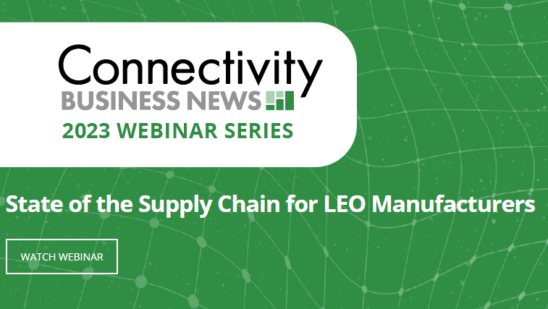
There is a boom in demand for smallsat buses, but supply chain issues are putting strain on manufacturers trying to meet that demand. What challenges do manufacturers face in finding the parts and materials they need, and how are they adjusting?
- How severely are supply chain issues impinging on space sector growth?
- Practical approaches to addressing supply chain challenges
- Advanced ordering and duplicative supply changes – to what degree do they work?
- Advantages of going vertical, either organically or via acquisition

A detailed dialogue examined market drivers, target market segments, combined multi-orbit GEO-NGSO offerings and key offering differentiators, competition/co-opetition factors, business modeling, ground segment-related strategies.
Questions of note sought to identify both company-specific and general drivers of involvement in the NGSO space by GSO operators, with particular reference to whether this was something under consideration prior to the arrival of players like OneWeb, Starlink, and Kuiper, or whether it was a reaction to their emergence.



